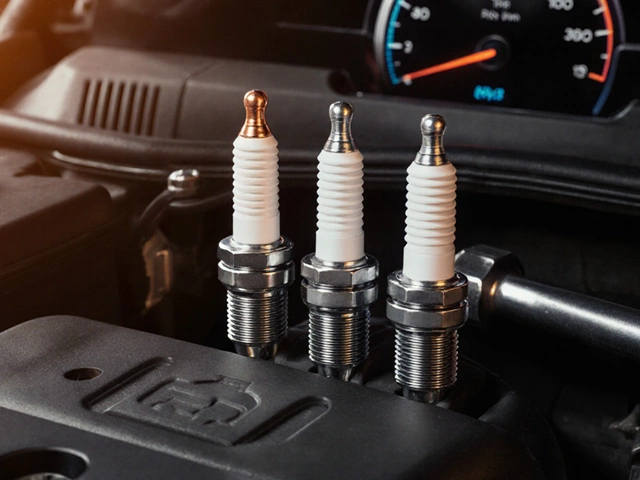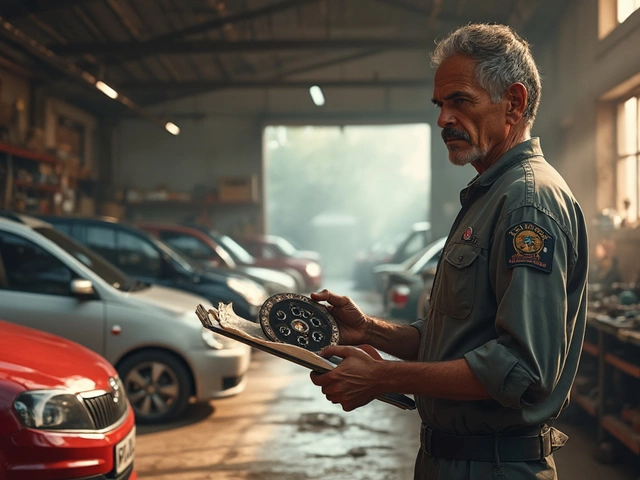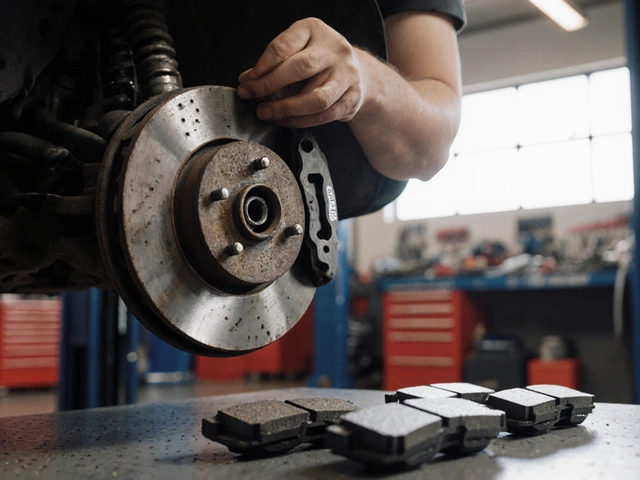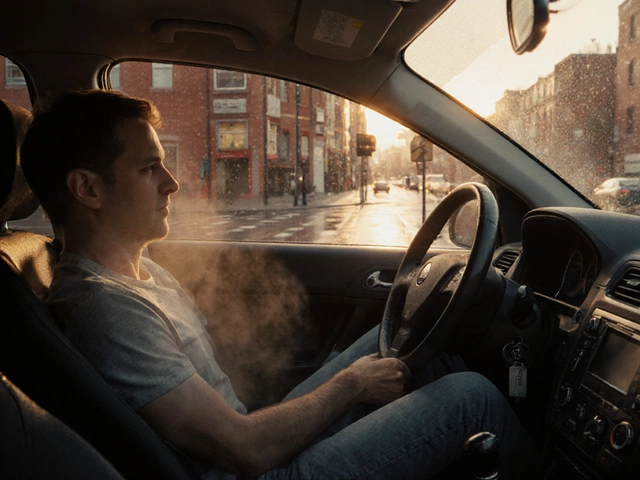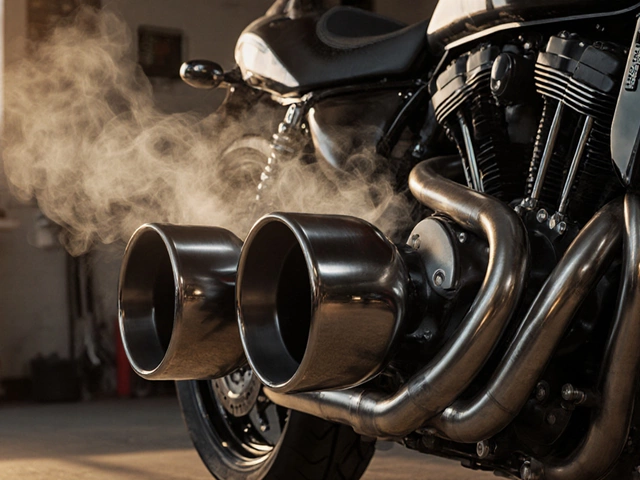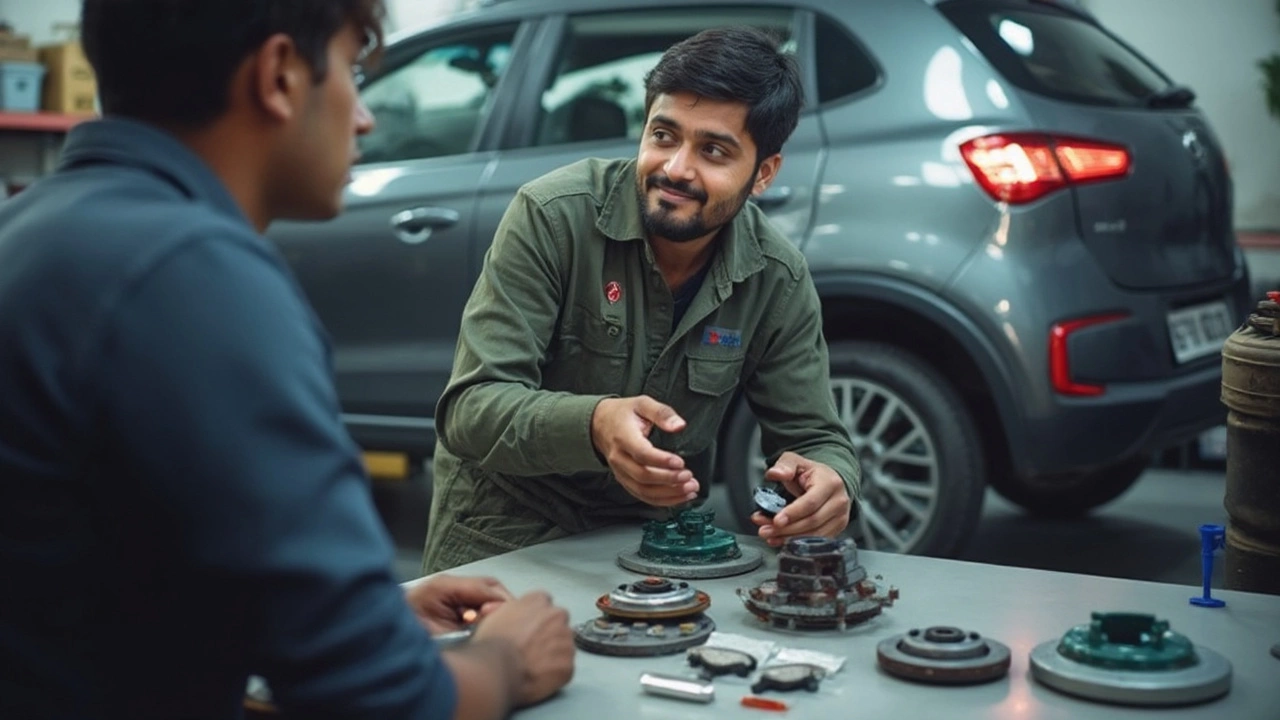
This question comes up all the time: Do you really have to replace brake rotors when putting on new brake pads? The short answer is, not always. But if you get this wrong, those new pads might wear out too soon or your brakes could end up noisy—or worse.
Let's get practical for a second. Usually, pads wear out way faster than rotors. It's not odd to need new pads after 30,000 miles but make it to 60,000 before the rotors are toast. Car makers even design rotors to outlast several sets of pads if they aren't abused. So, changing just the pads can be totally fine in many cases.
But here's where it gets tricky: rotors don't last forever. If they're warped, too thin, or deeply grooved, slapping on fresh pads won't solve anything. A worn-down rotor can actually grind through a new pad faster than you'd expect.
Before you shell out for new rotors, it's smart to take a close look—literally. Look for blue spots, deep grooves, or a lip around the edge; those are all red flags. A simple fingernail test can even help: drag your nail across the surface. If it catches, those grooves are too deep.
- What Really Happens During Braking?
- When Replacing Brake Pads Alone Makes Sense
- How to Spot Rotor Trouble
- Risks of Skipping Rotor Replacement
- Tips for Saving Money on Brake Repairs
What Really Happens During Braking?
When you press the brake pedal, there’s a simple chain reaction. Your foot pushes a piston inside the master cylinder, moving brake fluid through lines toward each wheel. This pressure forces calipers to clamp down on the brake pads, pressing them against the spinning rotors (those flat metal discs connected to each wheel).
The magic—and all the heat—happens here. That friction between pad and rotor slows the wheel down, turning your car’s momentum into heat. We're talking hundreds of degrees, especially during hard stops or quick city driving. Brake pads are made to take the abuse, usually from a mix of metals and resins that can handle high temps while biting into rotors just enough to grab them without shredding them instantly.
Rotors, on the other hand, are built to be tough slabs of iron because they have to deal with repeated hits of super-hot friction without warping or wearing too fast. They’re also designed to stay flat and evenly thick, since a wavy or thin rotor can make your brake pedal pulse or squeal.
Over time, this constant pad-on-rotor action wears both parts. Pads wear down first, but rotors also lose a tiny bit of material every time you hit the brakes. That’s why it’s smart to know the basics of both—ignoring either can lead to worse brake performance, more noise, or even warped rotors that feel weird when you slow down.
When Replacing Brake Pads Alone Makes Sense
So, you want to know if you can just swap the pads and save the cost of new rotors. Here’s the deal: if your rotors don’t show major wear, warping, or deep grooves, you don’t have to change them every time you throw in new brake pads. Most modern cars are built with rotors tough enough to weather two or more pad replacements, as long as you drive normally and your brakes don’t get overheated often.
The real trick is knowing what 'good enough' means for rotors. If they’re smooth, not too thin, and there’s no strong vibration felt when braking, the rotors will usually handle another set of pads. Rotors have a 'minimum thickness' stamped right on them or listed in your owner's manual. If they're at or above this number, you’re in the clear.
Here are some situations where it’s totally reasonable to go pads-only:
- Your rotors measure above minimum thickness (check with a micrometer or ask your mechanic).
- There are no visible cracks or big rust spots.
- You don’t feel pulsing or wobble when you brake.
- The rotor surface isn’t chewed up with deep grooves (light marks are normal).
- You’ve never let your brakes grind (driving with metal-on-metal sound kills rotors fast).
How common is it to just replace pads? It happens a lot—in fact, most auto shops do pads-only jobs as long as the rotors check out. Here's a quick reference guide mechanic shops use to decide:
| Condition | Replace Rotors? |
|---|---|
| Rotors above min. thickness, smooth face, no wobble | No |
| Rotors near/below min. thickness | Yes |
| Warped (pedal pulses or steering wheel shakes) | Yes |
| Deep scoring, cracks, or major rust | Yes |
If you check these boxes and the ride feels normal, keeping your rotors is totally safe. Pads-only jobs can save you anywhere from $100–$300 depending on the car. But don’t cut corners—always measure and inspect first.
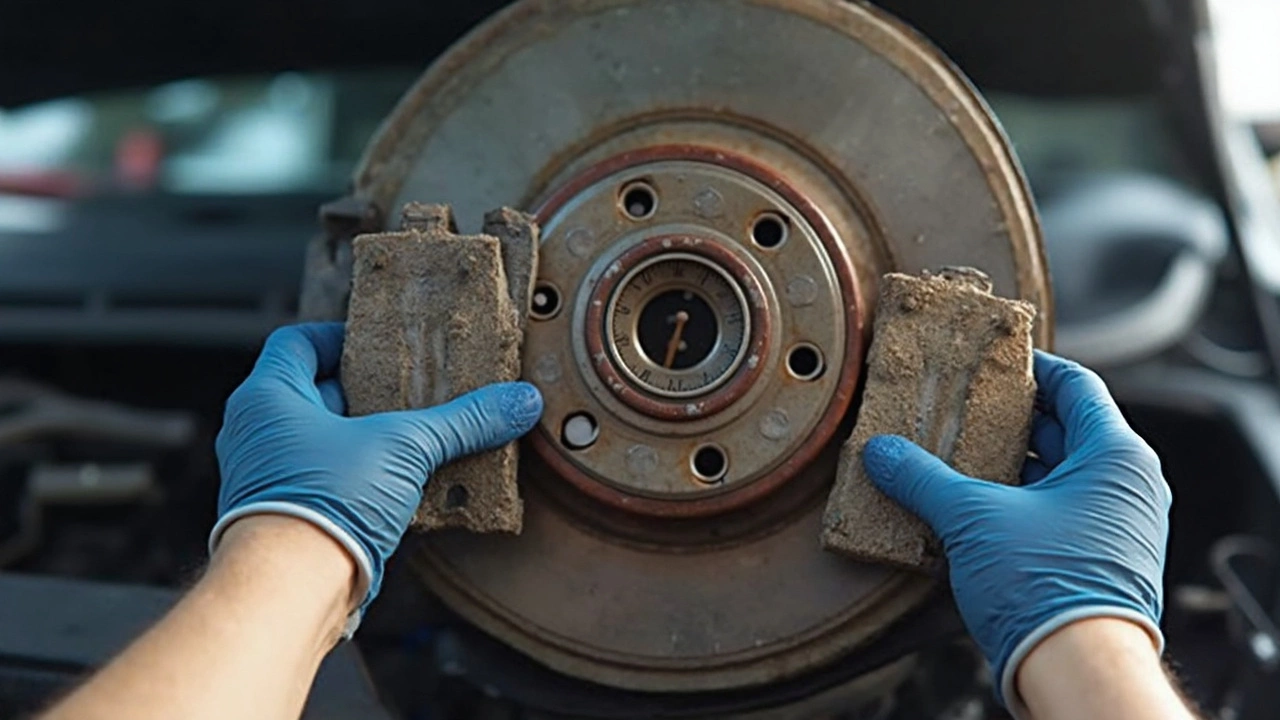
How to Spot Rotor Trouble
So how do you know if your rotors need help, or if you can safely skip them and just swap the pads? You don’t need a bunch of tools, just a sharp eye and a couple minutes. Rotors give off warning signs when they’re worn out or damaged, and you can see most of these right through the spaces in your wheels.
- Brake pads usually wear thin before rotors, but grooves and scoring on the rotor surface mean things aren’t right. Run your finger (careful, they can be sharp) or your fingernail across the rotor—a smooth finish is good, but lines or ridges are not.
- Any “lip” around the edge can tell you the rotors are shrinking from normal wear. Mechanics often measure this with a micrometer, but if that rim is obvious, you’re probably getting close to the minimum thickness allowed.
- Bluish or rainbow discoloration is a tell-tale sign the rotors overheated. This could lead to hard spots and uneven braking, even if the rotor looks fine otherwise.
- If you feel the steering wheel or brake pedal pulsing when you brake, chances are those rotors are warped. This doesn’t always show visually, but it’s super common if a car’s been driven hard, or if pads were run down to metal.
- Grinding or loud squealing—even with brand new pads—pretty much always means the old rotors were rough, grooved, or rust-pitted.
If you spot any of these issues, changing just the pads won’t solve the underlying problem, and you’re likely to end up back at the shop sooner rather than later. When in doubt, you can ask a mechanic to measure the rotor thickness. New rotors are usually around 1 inch thick; if they’re down close to manufacturer’s “minimum thickness”—stamped right on the rotor—you’re better off swapping them now.
Risks of Skipping Rotor Replacement
Trying to save cash by replacing just the brake pads but not the rotors? Sometimes it works, but here's where things can go sideways fast.
If your rotors are worn, warped, or too thin, slapping on new pads won't give you much improvement. The biggest complaint you'll hear from folks who cut corners like this? Squealing, grinding, or pulsing brakes even after new pads. That's because old rotors don't give the fresh pad material a clean, flat surface to anchor onto.
Worn rotors can actually hurt braking performance. Brake fade, longer stopping distances, and even a soft pedal feeling can all show up. The National Highway Traffic Safety Administration (NHTSA) notes that bad brakes are a top reason for crashes caused by vehicle failure in the U.S.
| Problem | Possible Effect |
|---|---|
| Too-thin rotors | Overheat or crack, putting you at risk of brake failure |
| Warped rotors | Steering wheel shakes under braking |
| Grooved rotors | Uneven pad wear, noisy brakes |
If you stick new brake pads on bad rotors, don't expect them to last. Factory-fresh pads can be chewed up in half the usual mileage. That means two repairs (and two bills) instead of one.
So what else can happen?
- Your car may fail safety inspections, especially if the rotor is below minimum thickness (usually stamped right on the metal).
- Brake pedal might pulse, or your stop distance increases, which is dangerous in emergencies.
- The rest of your braking system—calipers, ABS, and even tires—can take a beating.
Bottom line: if the rotors are in bad shape, skipping replacement messes with way more than braking power. It can also put you and everyone else on the road at risk.
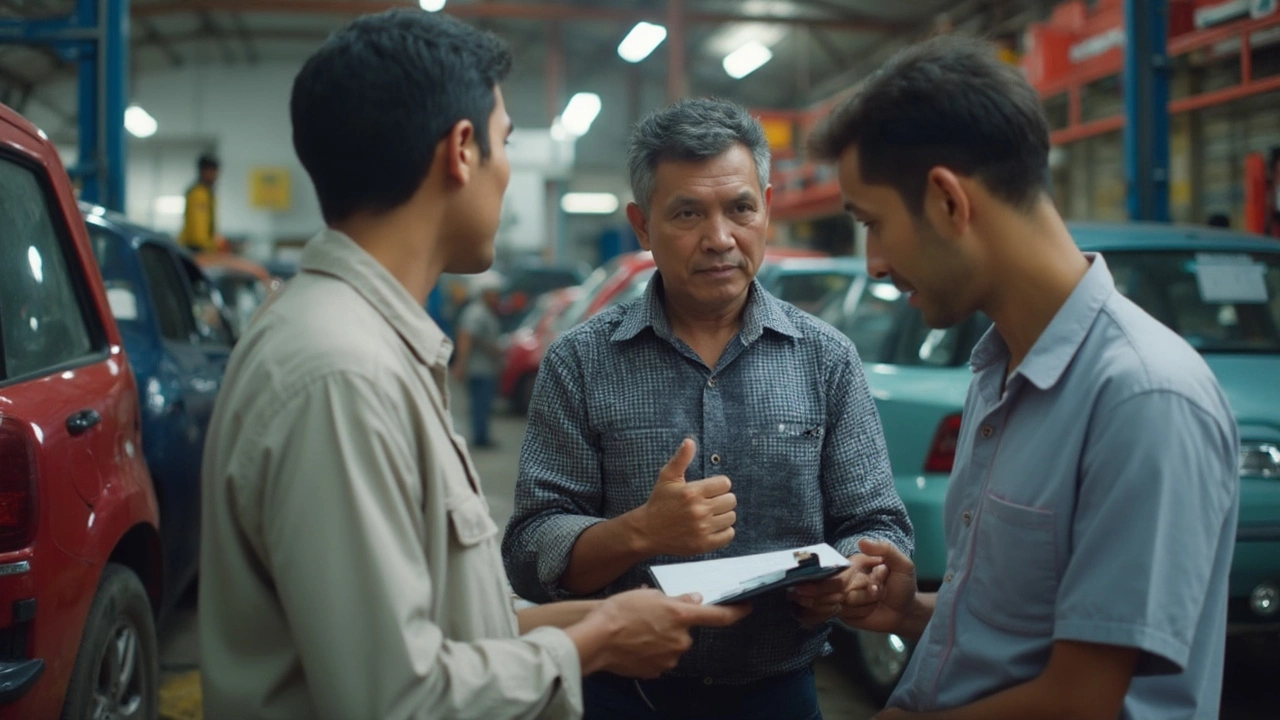
Tips for Saving Money on Brake Repairs
Brake work can be pricey, but there are ways to knock down that bill without risking your safety. A little know-how goes a long way, and sometimes a fifteen-minute check can save hundreds in the long run.
- Brake pads often wear out way before the rotors, but some shops push for full replacements anyway. Always ask your mechanic to show you the actual wear on your parts—reputable shops won’t mind showing you.
- Check out your owner's manual for how thick your rotors can safely get before replacement. Most passenger cars need rotors replaced below 1mm to 2mm minimum thickness (varies by model). Shops have a micrometer tool that measures this in seconds. If you hear the word "resurfacing," that means grinding rotors smooth. It's a solid option if they aren't too thin.
- Buy parts yourself if you’re up for a little research. Online auto part stores often offer pads and rotors at half the price compared to dealer markups. Just double-check you’re getting the right size for your make and model.
- DIY brake work is doable for the handy crowd. Pads and even rotors aren’t rocket science if you’ve got basic tools and a sturdy jack. YouTube is packed with step-by-step guides—just don’t skip safety steps.
- Pick quality over price for critical parts. Dirt-cheap pads can squeal and wear down way faster, so you end up paying more in the end.
| Service | Independent Shop | Dealership |
|---|---|---|
| Pad Replacement (Front) | $120 - $180 | $180 - $250 |
| Rotor Replacement (Pair) | $200 - $350 | $300 - $500 |
| Pad + Rotor Replacement (Axle) | $350 - $600 | $500 - $800 |
Getting a second opinion never hurts, especially if you get a big estimate from a chain shop. And if a shop refuses to give back your old parts or says you need everything replaced without showing you, that's a big red flag. Save your wallet—and your sanity—by making sure you know exactly what's needed before you agree to any big repairs.
